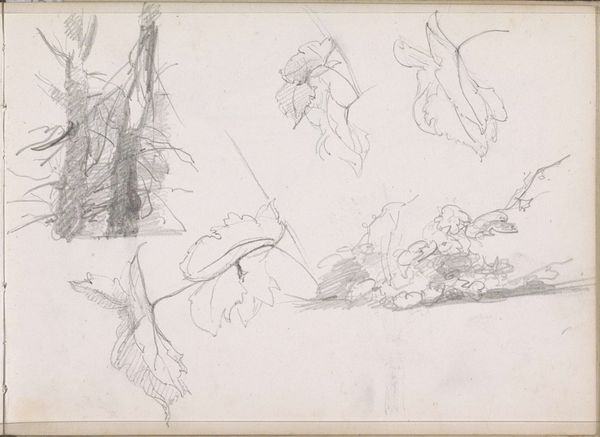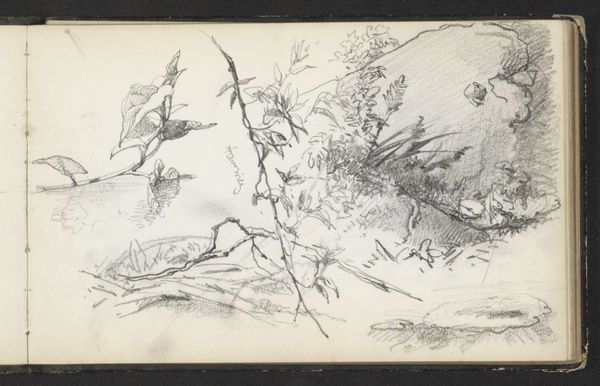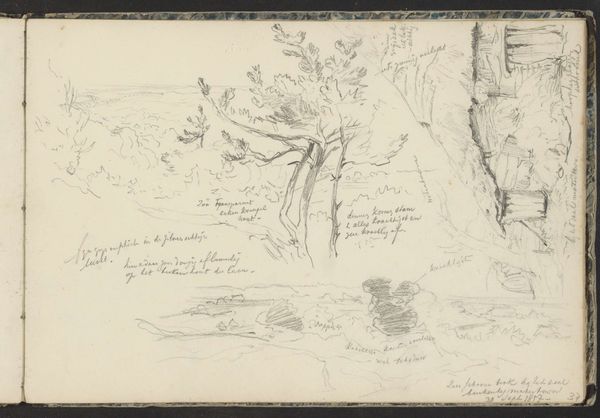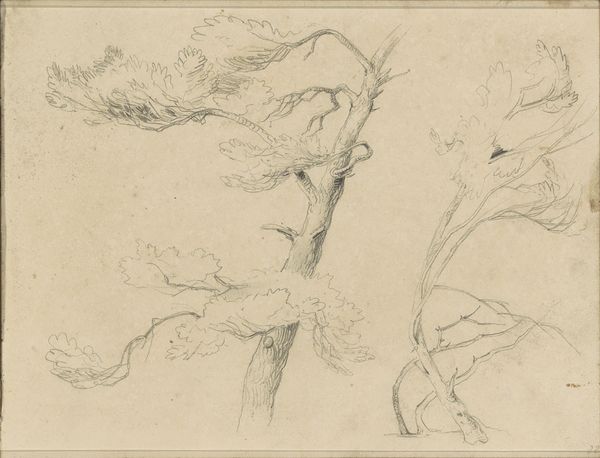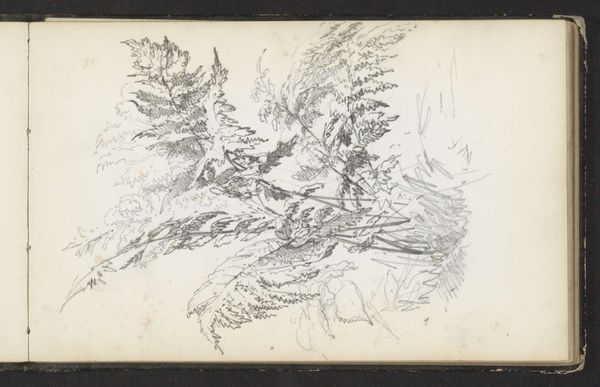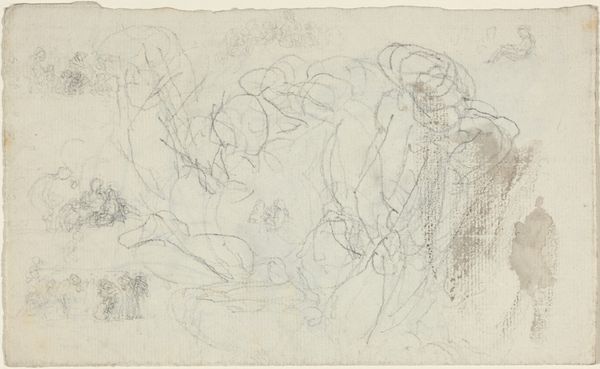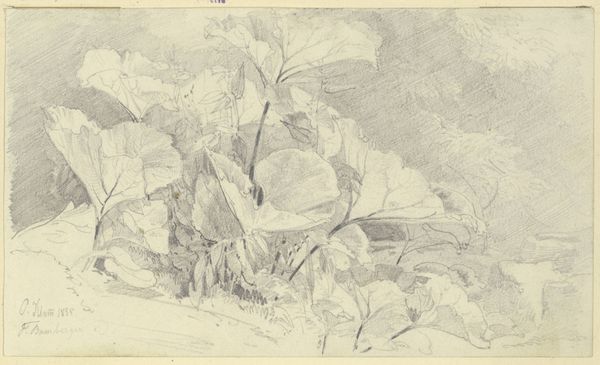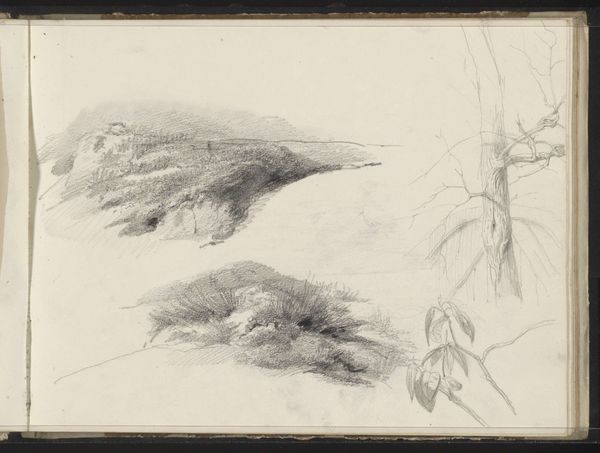
drawing, paper, pencil
#
portrait
#
drawing
#
pencil sketch
#
landscape
#
figuration
#
paper
#
pencil
Copyright: Rijks Museum: Open Domain
Editor: Here we have Maria Vos's "Vlinder op een tak," dating from 1834 to 1906, a drawing rendered in pencil on paper. The subtle detail is striking. What formal qualities stand out to you? Curator: I find the use of line particularly compelling. Note how the varying pressures create depth and volume, particularly in the leaves. This play of light and shadow, achieved solely through graphite, generates a remarkable three-dimensionality. The composition itself is quite intriguing with several vignettes. Have you noticed how they function independently yet form a cohesive whole? Editor: I hadn't considered each little drawing on the page separately, I was mainly focusing on the composition as a unified image. Do you see a certain type of rhythm? Curator: Precisely. The distribution of weight across the page guides the eye. There’s a clear movement from the upper left, down and across. Consider the empty spaces. They are as crucial as the marks themselves in establishing balance and proportion, no? Editor: I think I was getting lost in the figures to appreciate how their lines communicate the volume of their form. Curator: Yes. This use of line transcends mere representation. Note how it structures the form. In short, line *is* form. How would you describe the function of shading and cross-hatching employed throughout the sketch? Editor: They seem to generate volume, not just on each drawing itself, but on the composition overall, binding each part to one another. Curator: Indeed. Vos manipulates light and dark to build layers of form and spatial relation across the sketches. Editor: Thinking about the function of line, space, and tone helped me to grasp this work’s subtle complexity. Curator: And understanding how these basic formal features contribute to the overall visual experience unlocks so much!
Comments
No comments
Be the first to comment and join the conversation on the ultimate creative platform.


